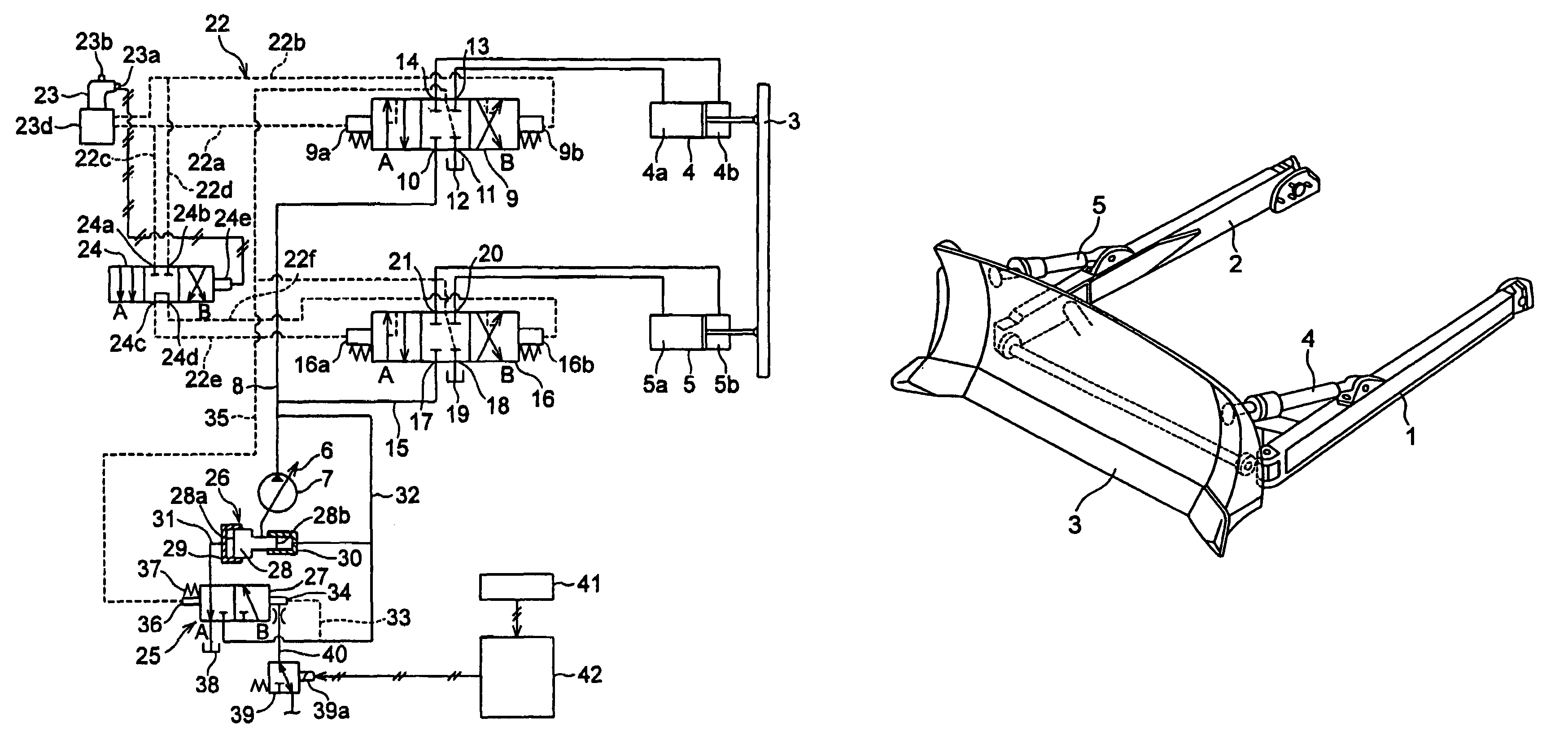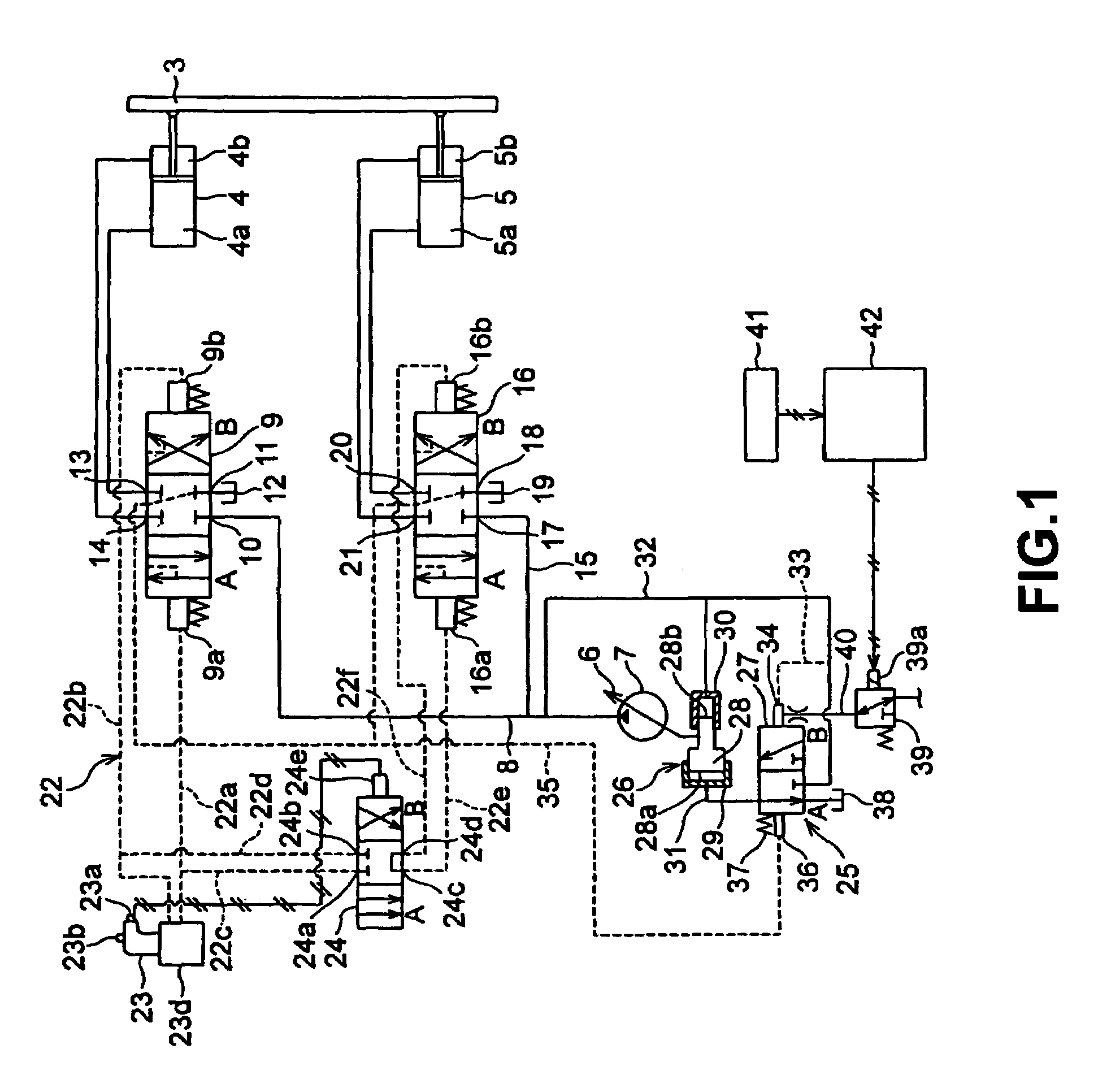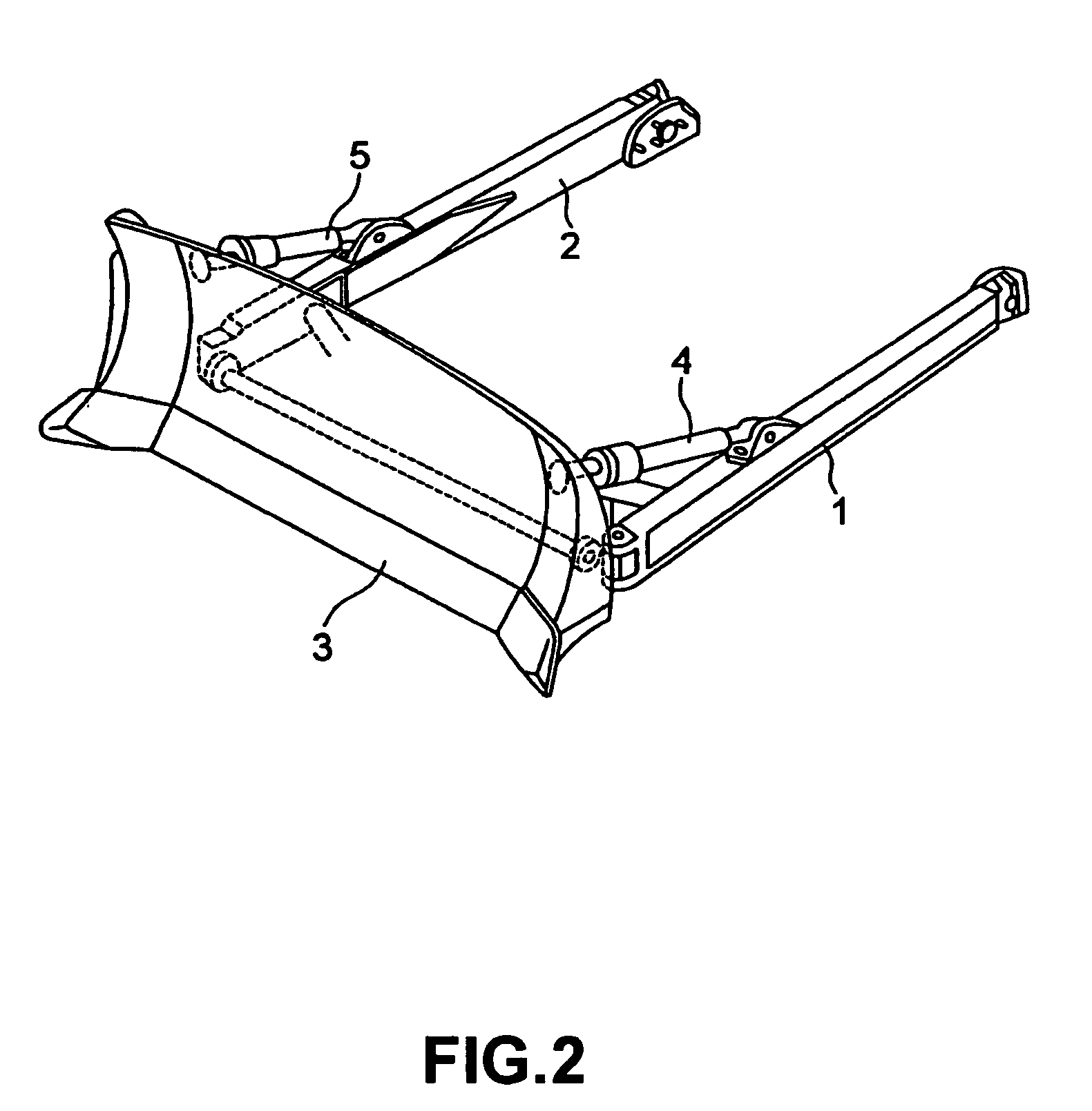Oil-pressure controlling device for earthmoving machine
a technology of oil pressure control and earthmoving machine, which is applied in the direction of servomotors, servomotor components, constructions, etc., can solve problems such as affecting operability, and achieve the effects of reducing discomfort for operators, reducing operating costs, and reducing operating costs
- Summary
- Abstract
- Description
- Claims
- Application Information
AI Technical Summary
Benefits of technology
Problems solved by technology
Method used
Image
Examples
first embodiment
[0110]FIG. 1 is a diagram of the present invention. In FIG. 1, an oil-pressure controlling device for a bulldozer is illustrated using a hydraulic circuit diagram. FIG. 2 is a perspective view of the constitution of the peripheral parts of the bulldozer blade.
[0111]As shown in FIG. 2, a blade 3 is provided in the front part of the vehicle main body not shown in the diagram. That is to say, in the left and right outer side of a truck frame not shown in the diagram, one end of a left and right pair of straight frames 1, 2 are supported using trunnions as a fulcrum. The front ends of the straight frames 1, 2 are pivotally-supported at positions to the left and right respectively of the rear surface of the blade 3.
[0112]A pair of left and right tilt cylinders (tilt hydraulic actuators) 4, 5 that tilt the blade 3 to the left and right are provided between the blade 3 and the straight frames 1, 2. Rods of the tilt cylinders 4, 5 connect to the left and right of the rear surface of the bla...
second embodiment
[0191]Next, a description will be given of a
[0192]Although, in the first embodiment described above, switches for the selection of either a single tilt operation or a dual tilt operation are provided as an indicating device 41 (switches 141a, 141b) separately to switches 23b, 23a (dual tilt operation when switch 23b is OFF, and single tilt operation when switch 23b is OFF and switch 23a is OFF) of the operating lever 23, an embodiment that, interlinked with the operation of the switches 23b, 23a of the operating lever 23 and omitting the arrangement of the indicating device 41, affords the same changes in the magnitude of the ΔPLS as the first embodiment is also possible.
[0193]FIG. 3 is a hydraulic circuit diagram of a second embodiment.
[0194]In FIG. 3, in which the arrangement of the indicating device 41 is omitted, electrical signals that express the operation details of the pitch dump / pitch back switch 23a and the dual switch 23b are sent to the controller 42 by way of an electri...
third embodiment
[0201]Next, a description will be given of a third embodiment ideal for use where left and right cylinders 4, 5 of different cylinder size for machine types of a standard blade specification and machine types of a large blade specification are installed in the hydraulic circuit.
[0202]The constitution of the hydraulic circuit adopted for this third embodiment comprises, replacing the indicating device 41 of the hydraulic circuit of FIG. 1, an indicating device 241 shown in FIG. 6B.
[0203]As shown in FIG. 6B, the indicating device 241, which comprises a switch 241a that is selected for tilt cylinders 4, 5 of a “small cylinder size” and a switch 241b that is selected for tilt cylinders 4, 5 of a “large cylinder size”, is selectively operated by the operator. The indicating device 241 is connected to the controller 42 by way of an electrical signal line. The controller 42 is contacted to an electromagnetic solenoid 39a of a load sensing set pressure changeover valve 39 by way of an elect...
PUM
 Login to View More
Login to View More Abstract
Description
Claims
Application Information
 Login to View More
Login to View More - R&D
- Intellectual Property
- Life Sciences
- Materials
- Tech Scout
- Unparalleled Data Quality
- Higher Quality Content
- 60% Fewer Hallucinations
Browse by: Latest US Patents, China's latest patents, Technical Efficacy Thesaurus, Application Domain, Technology Topic, Popular Technical Reports.
© 2025 PatSnap. All rights reserved.Legal|Privacy policy|Modern Slavery Act Transparency Statement|Sitemap|About US| Contact US: help@patsnap.com



